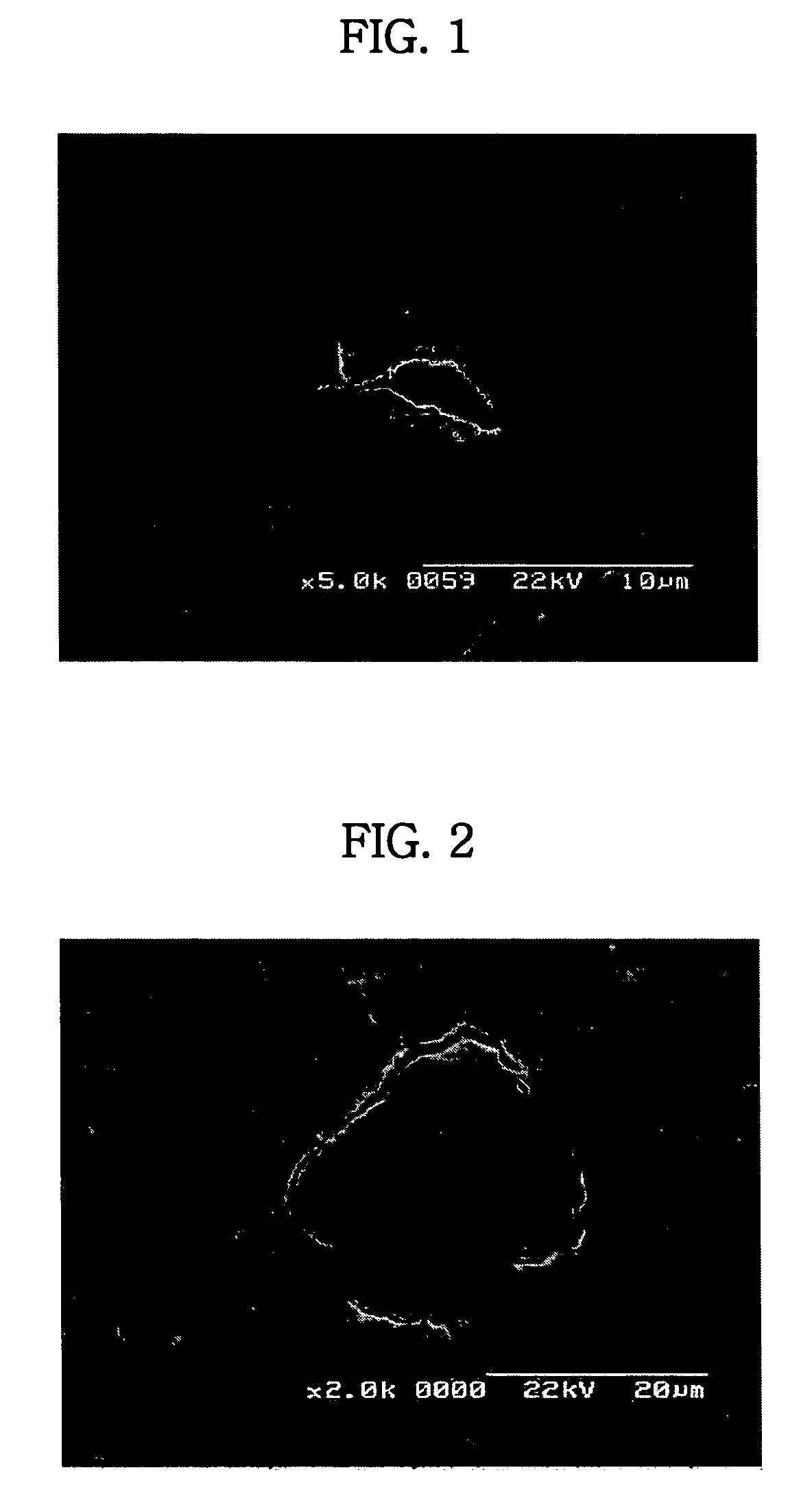Paste for solid oxide fuel cells, anode-supported solid oxide fuel cells using the same, and fabricating method thereof
a solid oxide fuel cell and anode-supported technology, applied in the direction of cell components, final product manufacturing, sustainable manufacturing/processing, etc., can solve the problems of increasing process defects on the electrolyte layer, reducing the production yield and performance of the unit cell, and generating defects of an electrolyte. achieve the effect of reducing the structural defects of each layer and maximizing the thermo-mechanical property and electrochemical property of the unit cell
- Summary
- Abstract
- Description
- Claims
- Application Information
AI Technical Summary
Benefits of technology
Problems solved by technology
Method used
Image
Examples
Embodiment Construction
[0031] Reference will now be made in detail to the preferred embodiments of the present invention, examples of which are illustrated in the accompanying drawings.
[0032] The characteristics of the present invention and the characteristics of each step of fabrication will now be explained in detail by the following examples.
Fabrication of Anode Support
[0033] The characteristics required in an anode include electric conductivity, a thermal expansion coefficient, triple phase boundary length relating to electrochemical activity, and permeability of fuel gas. The electric conductivity and the thermal expansion coefficient are determined by the composition of raw materials of the anode, but the triple phase boundary length and the gas permeability are closely associated with its pore structure.
[0034] It is efficient to use a thermosetting binder to obtain a preferable pore structure for the anode. However, defects easily occur on a thick film formed on the anode due to segregations a...
PUM
| Property | Measurement | Unit |
|---|---|---|
| Temperature | aaaaa | aaaaa |
| Length | aaaaa | aaaaa |
| Length | aaaaa | aaaaa |
Abstract
Description
Claims
Application Information
 Login to View More
Login to View More - R&D
- Intellectual Property
- Life Sciences
- Materials
- Tech Scout
- Unparalleled Data Quality
- Higher Quality Content
- 60% Fewer Hallucinations
Browse by: Latest US Patents, China's latest patents, Technical Efficacy Thesaurus, Application Domain, Technology Topic, Popular Technical Reports.
© 2025 PatSnap. All rights reserved.Legal|Privacy policy|Modern Slavery Act Transparency Statement|Sitemap|About US| Contact US: help@patsnap.com



